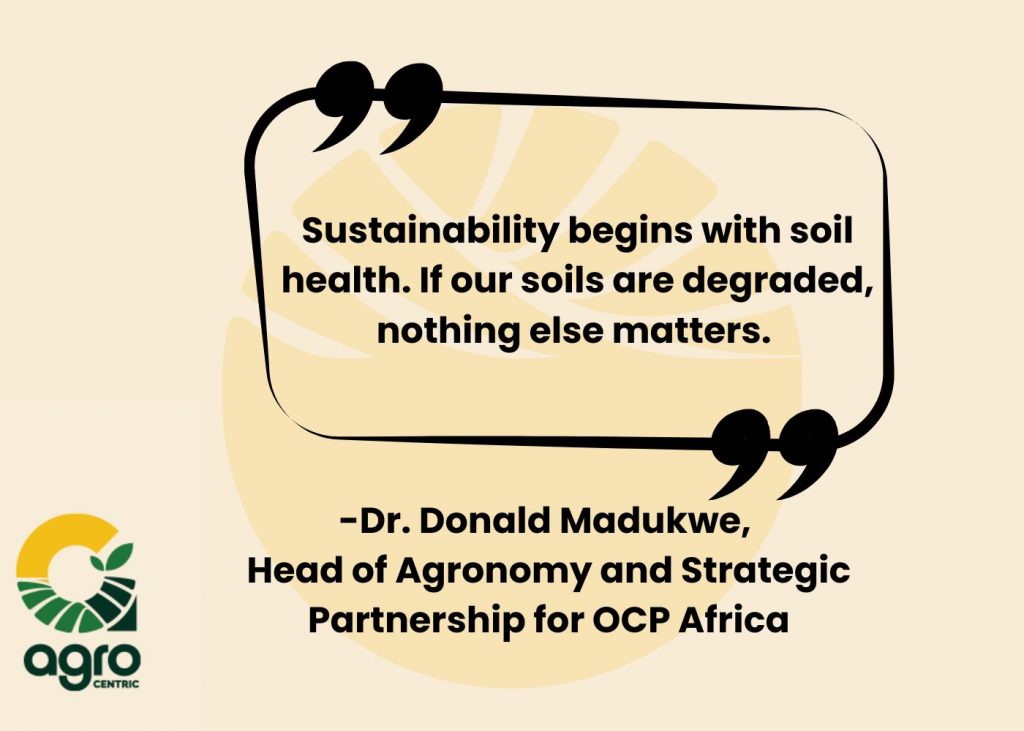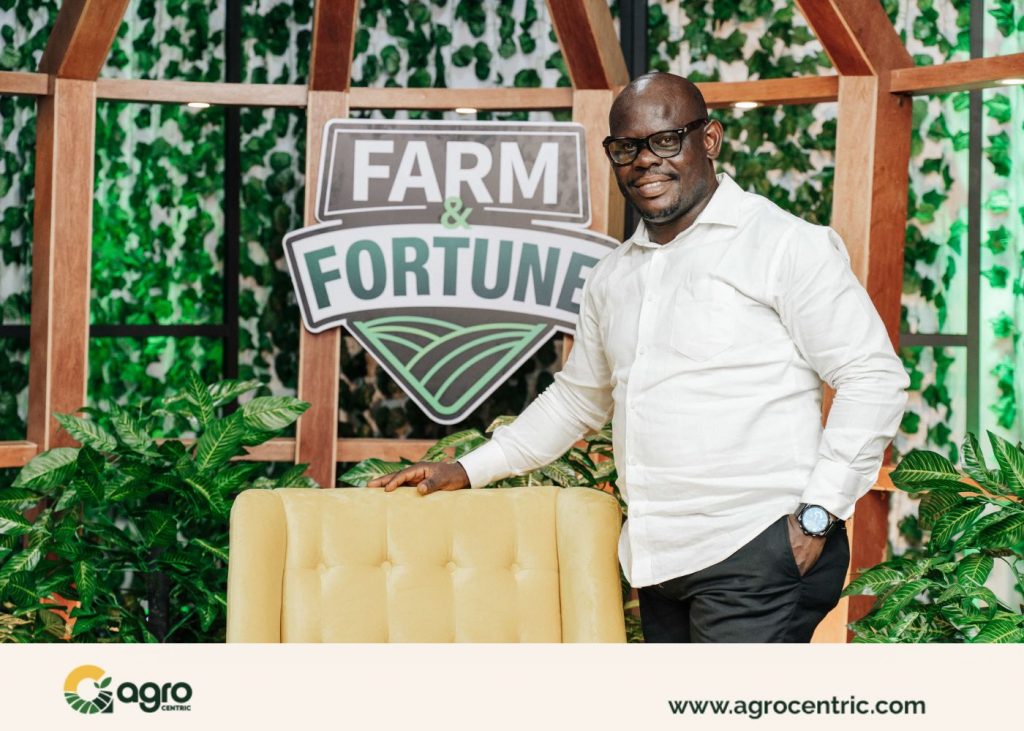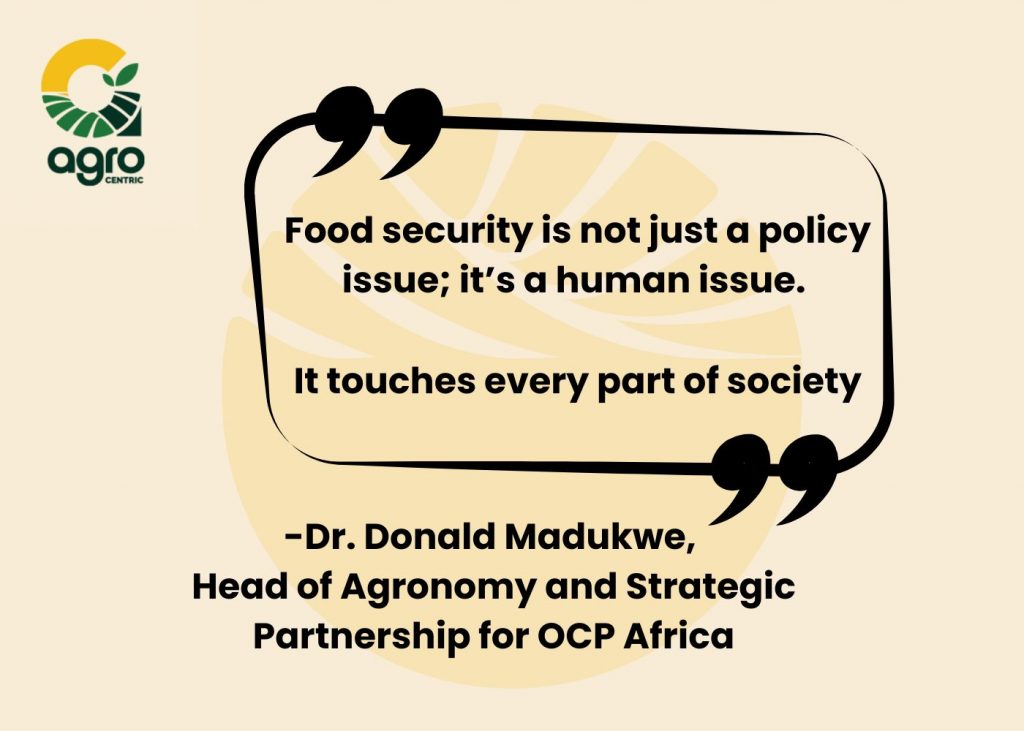
In a country like Nigeria, where agriculture is both culture and survival, the conversation about food security often centres on farming alone. However, the issue is far more complex, as explained by Dr. Donald Madukwe, Head of Agronomy and Strategic Partnership for OCP Africa. With years of experience in agriculture, development, and policy, Dr. Madukwe is a vocal advocate for food system transformation in Nigeria and across Africa.
In this exclusive interview with our editorial team, Dr. Madukwe discusses the realities of food insecurity in Nigeria and across Africa, highlighting its causes and effects and the urgent need for sustainable agricultural practices.
Dr. Madukwe, how do you define food security in a Nigerian context?
Food security means everyone has physical, social, and economic access to safe, nutritious, and sufficient food. And that’s not our reality today. Until the food on our tables is truly safe and sufficient, we cannot say we’re food secure.
You may think this is just a local Nigerian issue, but the data tells a global story. For instance, in 2022, over 258 million people worldwide faced acute food insecurity. Over 800 million people are malnourished, with 140 million children among them. These numbers cut across Central America, Africa (which records up to 30% food insecurity), and parts of South America. So this is a global emergency, with Nigeria at the heart of it.
What are the leading causes of food insecurity in Nigeria and across Africa?
While climate change is a well-known factor, it’s not the only one. In Nigeria, insecurity, such as armed conflicts and ethnic issues, is preventing farmers from accessing their lands. Even if you have inputs and tools, how can you farm if your life is at risk?
Other contributors include economic shocks, the COVID-19 pandemic, and the Ukraine-Russia conflict, which disrupted global supply chains and raised fertiliser and seed prices dramatically. Fertiliser is now so expensive that many smallholder farmers can’t afford it. And without affordable hybrid seeds, productivity declines.
When you factor in Nigeria’s explosive population growth, which is expected to rise to about 375 million by 2050, the pressure on food supply will escalate into a looming food-security crisis.

What other challenges are we not talking enough about?
One big issue is post-harvest loss. Even when we produce enough, a lot of food goes to waste due to poor storage, lack of infrastructure, and bad market access. This is especially true for perishable crops. Farmers lose income without cold chains or processing facilities, and consumers face scarcity.
You often refer to the “Four Pillars of Food Security.” Can you explain that to us?
Yes, food security rests on four core pillars: Availability—is food being produced and imported at sustainable levels? Accessibility—do people have the economic and physical means to get it? Utilisation—is the food actually nutritious and safe for the body? Stability—will access to food remain consistent over time?
Each pillar depends on the others. We cannot focus only on quantity. Food must be quality, within reach, and consistent. We must pursue these standards if we genuinely want food-secure households and nations.
What does “utilisation” really mean in day-to-day terms for families?
Utilisation is about nutritional quality. Many Nigerians eat plenty of food but are still malnourished. This is hidden hunger, a lack of essential vitamins and minerals. For example, many local crops lack zinc or selenium, which are crucial for growth and immunity.
We must also talk about food safety. How is food prepared? What are the hygiene conditions in our markets and kitchens? These questions are rarely asked, yet they’re central to health.
What’s your take on sustainable agriculture, and what should Nigeria be doing differently?
Sustainability begins with soil health. If our soils are degraded, nothing else matters. We need regenerative practices like carbon farming, water management, and integrated pest and fertility strategies. Rainfall is no longer reliable, so we must invest in irrigation channels and adopt efficient irrigation methods.
We must also lessen our reliance on chemical inputs. Effective pest control, nutrient management, and land use should align with 4R Nutrient Stewardship principles and prioritize environmental sustainability. This approach should extend to livestock farming, including meat, dairy, and hide production, ensuring we meet protein demands in a sustainable manner.

Can you give an example of where sustainable food security is working?
Take Babban Gona, for example. They group farmers into clusters, provide support, and help them access quality inputs and markets. This kind of aggregated model is scalable and effective.
Olam, another big player, is also working backwards from the market, supporting farmers with resources and buying directly from them. These models are farmer-focused and results-driven, which is what we need.
What’s the one thing you want readers to remember from this conversation?
Food security is not just a policy issue; it’s a human issue. It touches every part of society: health, education, peace, economy, and the environment. It asks: What kind of future do we want for Africa?
If we want to feed our growing population and thrive as a continent, we must take agriculture seriously and reimagine how we do it. The time to act is now.

Thank you, Dr Donald, for your time. You can connect with Dr. Donald on LinkedIn. If you’re a farmer, policymaker, student, or investor, now is the time to engage with sustainable agriculture. Learn more, innovate, and advocate for practices that protect food, people, and the planet.
Follow AgroCentric for more expert insights and actionable strategies for building a food-secure Africa.